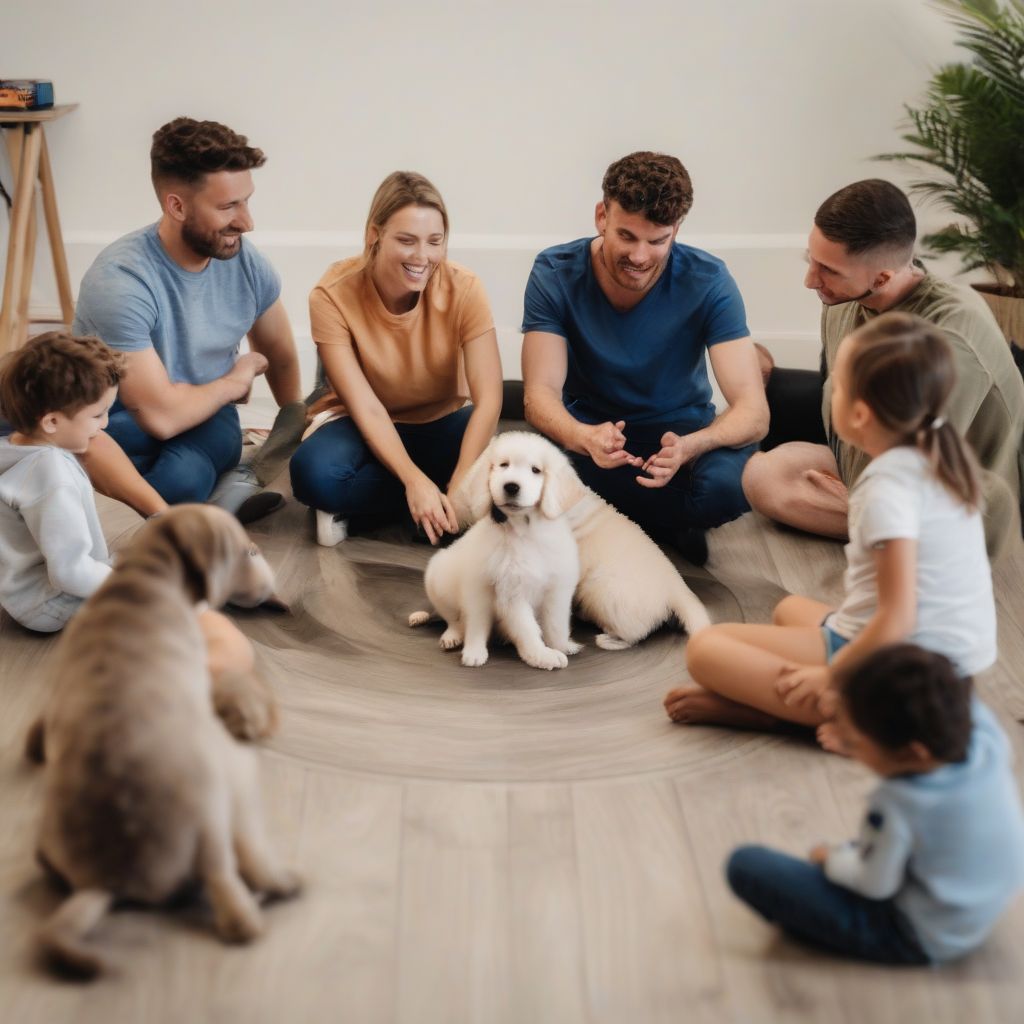Imagine this: you’re at the park with your furry best friend, enjoying the sunshine and fresh air. Suddenly, a playful dog approaches, tail wagging excitedly. Does your dog greet them with a wagging tail and playful bow? Or do they cower, growl, or even lash out? The answer depends largely on one crucial factor: socialization.
Socializing your pet, whether they’re a playful puppy, a curious kitten, or even a talkative parrot, is not just about preventing unwanted behaviors – it’s about equipping them with the confidence and social skills to live a happy and fulfilling life. Just like humans thrive in a supportive community, our pets need positive interactions with other animals and people to develop into well-adjusted companions.
Why is Pet Socialization So Important?
Socialization is the process of introducing your pet to a wide range of sights, sounds, people, animals, and environments in a positive and controlled manner. This process is vital during their early development, laying the foundation for their future temperament and behavior. Here’s why it matters:
- Reduces Fear and Anxiety: A well-socialized pet is less likely to be fearful or anxious in new situations. This translates to a calmer, happier pet who is a joy to be around.
- Prevents Behavioral Issues: Lack of socialization is a major contributor to behavioral problems like aggression, fear-based biting, and destructive behavior.
- Strengthens the Bond: Socialization involves positive interactions and experiences, which strengthens the bond between you and your pet.
- Makes Life Easier: A well-socialized pet is a pleasure to take anywhere. They’ll be comfortable at the vet, the groomer, the park, and even on vacation.
- Enhances Communication: Socialization helps pets understand and respond appropriately to the social cues of other animals and humans.
The Key Socialization Periods: Don’t Miss the Boat!
While socialization is a lifelong endeavor, certain periods are especially critical for shaping your pet’s behavior:
Puppies: Between 3 and 14 weeks of age, puppies have a “socialization window” where they are most receptive to new experiences. Early and positive exposure during this time is crucial for their development.
Kittens: Kittens are most receptive to socialization between 2 and 7 weeks of age. Introducing them to a variety of sights, sounds, and experiences during this period is key.
Adult Pets: Even adult pets who haven’t been properly socialized can benefit from gradual and positive introductions to new experiences.
Creating a Socialization Checklist: Your Pet’s Passport to Confidence
Now, let’s dive into the practical steps you can take to socialize your pet effectively:
1. Start Early and Gradually:
The golden rule of socialization is to start early and progress gradually. Begin with short, positive exposures in controlled environments and gradually increase the duration and intensity of the experiences as your pet gains confidence.
2. Embrace the Power of Variety:
Expose your pet to a wide range of:
- People: People of different ages, genders, appearances, and abilities.
- Animals: Other dogs, cats (if safe and appropriate), and even different species if possible. Always supervise interactions carefully.
- Environments: Parks, busy streets, pet-friendly stores, the veterinarian’s office, the groomer’s, and even different rooms in your house.
- Sounds: Household appliances, traffic noises, thunderstorms, and even the doorbell.
- Surfaces: Grass, concrete, carpet, tile, wood, and even water (if your pet enjoys it).
3. Make it Fun and Rewarding:
Socialization should be a positive experience! Use plenty of praise, treats, and your pet’s favorite toys to reward them for their bravery and good behavior. Keep sessions short and end on a positive note.
4. Read Your Pet’s Signals:
Pay close attention to your pet’s body language. Signs of stress include:
- Yawning, lip licking, panting excessively
- Tail tucked between legs
- Whale eye (showing the whites of their eyes)
- Ears flattened back
- Trembling or shaking
If you notice any of these signs, remove your pet from the situation immediately and give them a break.
5. Enlist Professional Help:
Consider enrolling your pet in a socialization class or seeking guidance from a certified dog trainer or behaviorist. These professionals can provide tailored advice and support.
 Dog Training Class
Dog Training Class
6. Continue Socialization Throughout Life:
Socialization is not a one-time event but an ongoing process. Continue to provide your pet with new and positive experiences throughout their life to reinforce their confidence and social skills.
Addressing Common Socialization Challenges:
Here are some common challenges pet owners face during socialization and how to overcome them:
- Fear or Anxiety: If your pet shows signs of fear, don’t force them into uncomfortable situations. Take things slowly, use positive reinforcement, and consult a professional if needed.
- Lack of Opportunities: Get creative in finding socialization opportunities. Invite friends with pets over for supervised playdates or visit dog-friendly parks or stores.
- Over-Socialization: Yes, there is such a thing as too much of a good thing. Overwhelming your pet with too many new experiences can be counterproductive. Watch for signs of stress and adjust your approach as needed.
Socialization Success: A Happier Pet, a Richer Life
Remember, investing in your pet’s socialization is one of the most valuable gifts you can give them. By providing them with positive early experiences, you’re setting the stage for a lifetime of confidence, happiness, and strong social skills. A well-socialized pet is a joy to be around, enriching your life and strengthening the bond you share.
Do you have any heartwarming stories about your pet’s socialization journey? Share them in the comments below!
[amazon bestseller=”dog training”]
